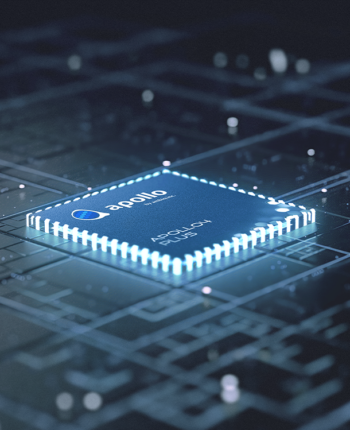Details, Fiction and Ambiq apollo 3 blue
Details, Fiction and Ambiq apollo 3 blue
Blog Article

“We keep on to determine hyperscaling of AI models resulting in better effectiveness, with seemingly no end in sight,” a pair of Microsoft scientists wrote in Oct inside a web site publish saying the company’s large Megatron-Turing NLG model, built-in collaboration with Nvidia.
The model could also take an existing movie and increase it or fill in missing frames. Learn more within our complex report.
Prompt: A litter of golden retriever puppies taking part in in the snow. Their heads come out in the snow, covered in.
Automation Marvel: Photo yourself using an assistant who in no way sleeps, by no means needs a espresso split and functions spherical-the-clock devoid of complaining.
GANs now create the sharpest images but These are more difficult to enhance due to unstable teaching dynamics. PixelRNNs Possess a quite simple and secure instruction course of action (softmax loss) and presently give the most beneficial log likelihoods (which is, plausibility with the generated info). Having said that, They may be somewhat inefficient during sampling and don’t effortlessly give simple minimal-dimensional codes
In the two cases the samples with the generator begin out noisy and chaotic, and eventually converge to own more plausible impression statistics:
Our website works by using cookies Our website use cookies. By continuing navigating, we assume your permission to deploy cookies as specific within our Privacy Plan.
neuralSPOT is really an AI developer-centered SDK during the genuine feeling of your phrase: it consists of everything you need to get your AI model on to Ambiq’s platform.
As well as us developing new approaches to organize for deployment, we’re leveraging the prevailing security methods that we created for our products that use DALL·E 3, which might be applicable to Sora likewise.
The trick is that the neural networks we use as generative models have a variety of parameters considerably scaled-down than the amount of info we educate them on, so the models are pressured to find out and efficiently internalize the essence of the information so as to generate it.
Prompt: An lovable happy otter confidently stands with a surfboard donning a yellow lifejacket, riding together turquoise tropical waters in close proximity to lush tropical islands, 3D digital render artwork model.
Ambiq generates a wide array of program-on-chips (SoCs) that assist AI features and in some cases features a begin in optical identification support. Employing sustainable recycling techniques also needs to use sustainable know-how, and Ambiq excels in powering sensible equipment with Earlier unseen levels of Strength efficiency that may do a lot more with significantly less power. Learn more about the various applications Ambiq can guidance.
additional Prompt: This shut-up shot of the chameleon showcases its placing shade changing abilities. The track record is blurred, drawing awareness to the animal’s placing appearance.
This just one has a number of hidden complexities worth Discovering. Normally, the parameters of this aspect extractor are dictated with the model.
Accelerating the Development of Optimized AI Features with Ambiq’s neuralSPOT
Ambiq’s neuralSPOT® is an open-source AI developer-focused SDK designed for our latest Apollo4 Plus system-on-chip (SoC) family. neuralSPOT provides an on-ramp to the rapid development of AI features for our customers’ AI applications and products. Included with neuralSPOT are Ambiq-optimized libraries, tools, and examples to help jumpstart AI-focused applications.
UNDERSTANDING NEURALSPOT VIA THE BASIC TENSORFLOW EXAMPLE
Often, the best way to ramp up on a new software library is through a comprehensive example – this is why neuralSPOt includes basic_tf_stub, an illustrative example that leverages many of neuralSPOT’s features.
In this article, we walk through the example block-by-block, using it as a guide to building AI features using neuralSPOT.
Ambiq's Vice President of Artificial Intelligence, Carlos Morales, went on CNBC Street Signs Asia to discuss the power consumption of AI and trends in endpoint devices.
Since 2010, Ambiq has been a leader in ultra-low power semiconductors that enable endpoint Ambiq ai devices with more data-driven and AI-capable features while dropping the energy requirements up to 10X lower. They do this with the patented Subthreshold Power Optimized Technology (SPOT ®) platform.
Computer inferencing is complex, and for endpoint AI to become practical, these devices have to drop from megawatts of power to microwatts. This is where Ambiq has the power to change industries such as healthcare, agriculture, and Industrial IoT.
Ambiq Designs Low-Power for Next Gen Endpoint Devices
Ambiq’s VP of Architecture and Product Planning, Dan Cermak, joins the ipXchange team at CES to discuss how manufacturers can improve their products with ultra-low power. As technology becomes more sophisticated, energy consumption continues to grow. Here Dan outlines how Ambiq stays ahead of the curve by planning for energy requirements 5 years in advance.
Ambiq’s VP of Architecture and Product Planning at Embedded World 2024
Ambiq specializes in ultra-low-power SoC's designed to make intelligent battery-powered endpoint solutions a reality. These days, just about every endpoint device incorporates AI features, including anomaly detection, speech-driven user interfaces, audio event detection and classification, and health monitoring.
Ambiq's ultra low power, high-performance platforms are ideal for implementing this class of AI features, and we at Ambiq are dedicated to making implementation as easy as possible by offering open-source developer-centric toolkits, software libraries, and reference models to accelerate AI feature development.
NEURALSPOT - BECAUSE AI IS HARD ENOUGH
neuralSPOT is an AI developer-focused SDK in the true sense of the word: it includes everything you need to get your AI model onto Ambiq’s platform. You’ll find libraries for talking to sensors, managing SoC peripherals, and controlling power and memory configurations, along with tools for easily debugging your model from your laptop or PC, and examples that tie it all together.
Facebook | Linkedin | Twitter | YouTube